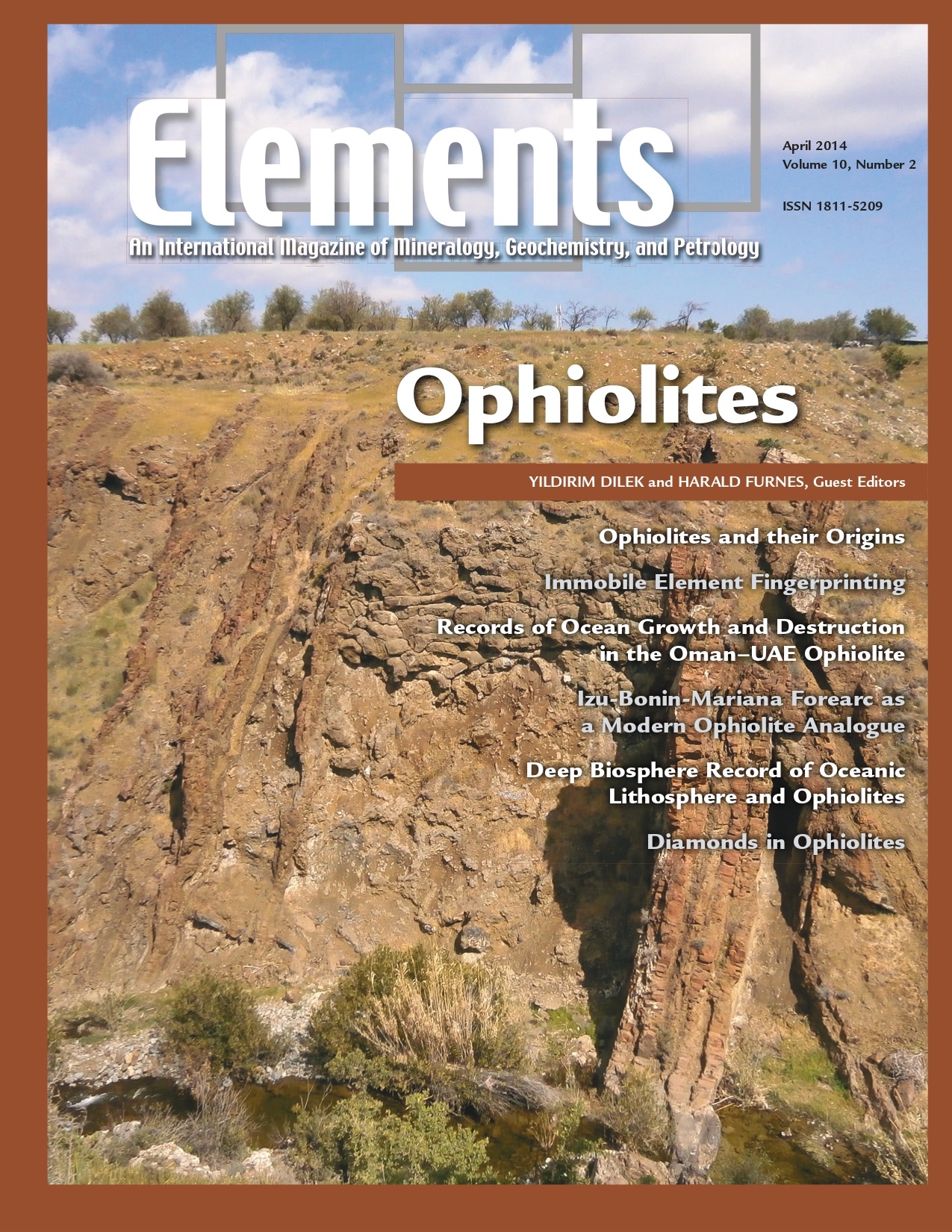
Granitic Pegmatites, August 2012, Vol. 8, No. 4
June 28, 2024
Kaolin, June 2014, Vol. 10, No. 3
June 28, 2024Ophiolites, April 2014, Vol. 10, No. 2
$20.00
This thematic issue covers some of the most exciting advances in ophiolite science. Focus is directed toward ophiolite classification during the formation and destruction of ocean basins; the mineralogy, petrology, and isotope geochemistry of ophiolites; and the trace element behavior of crustal and upper-mantle units in ophiolites.
Ophiolites
April 2014, Vol. 10, No. 2
This thematic issue covers some of the most exciting advances in ophiolite science. Focus is directed toward ophiolite classification during the formation and destruction of ocean basins; the mineralogy, petrology, and isotope geochemistry of ophiolites; and the trace element behavior of crustal and upper-mantle units in ophiolites. The issue covers the history of origin, the geochemical and petrological development, and the final emplacement of one of the largest and most studied ophiolites, the classical Semail ophiolite in Oman. Further, for a better understanding of ophiolites in relation to subduction processes, one of the papers deals with the lithological and geochemical development of the Izu-Bonin-Mariana forearc crust as a modern analogue. Finally, the issue presents some of the new and exciting aspects of microbial interaction with the volcanic component of oceanic crust, as observed in ophiolites as old as the young Earth.
Why You’ll Love Elements Magazine:
- Expert Contributors: Articles written by renowned researchers in the field of geoscience.
- Engaging Content: Join a community of readers who are passionate about Elements.
- Exceptional Quality: Each issue is printed on high-quality paper with stunning visuals and detailed illustrations that bring complex scientific concepts to life.
Order your copy of the April 2014 issue of Elements magazine today and discover the science of ophiolites.
Related products
-
Nanogeoscience, December 2008, Vol. 4, No. 6
$20.00At first glance, nano and Earth seem about as far apart as one can imagine. Nanogeoscience seems to be a word connecting opposites.
-
Phosphates And Global Sustainability, April 2008, Vol. 4, No. 2
$20.00Phosphorus is a unique element: it is essential to the existence of all living forms, and as such controls biological productivity in many terrestrial and marine environments; but when in excess, it leads to uncontrollable biological growth and water-quality problems. This has become a common environmental issue, resulting from our careless use of phosphorus in agriculture, yet phosphate ore deposits, from which fertilizers are produced, are a finite natural resource.
-
Arsenic, April 2006, Vol. 2, No. 2
$20.00Arsenic is an element known throughout history as a classic poison. Currently, very small but highly significant concentrations of this element in drinking water supplies are causing massive health problems to many millions of people in some of the world’s poorest nations, and more localised sources related to mining and processing are also a concern.




